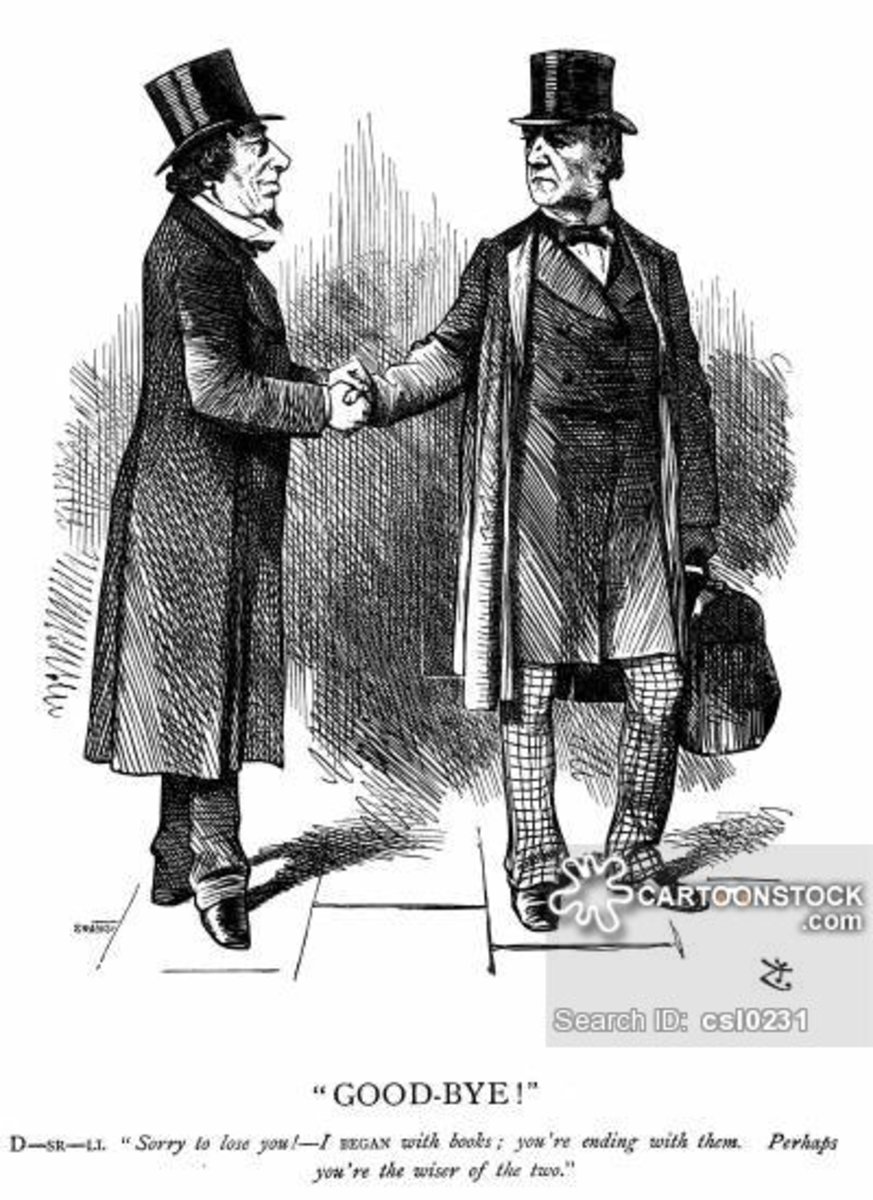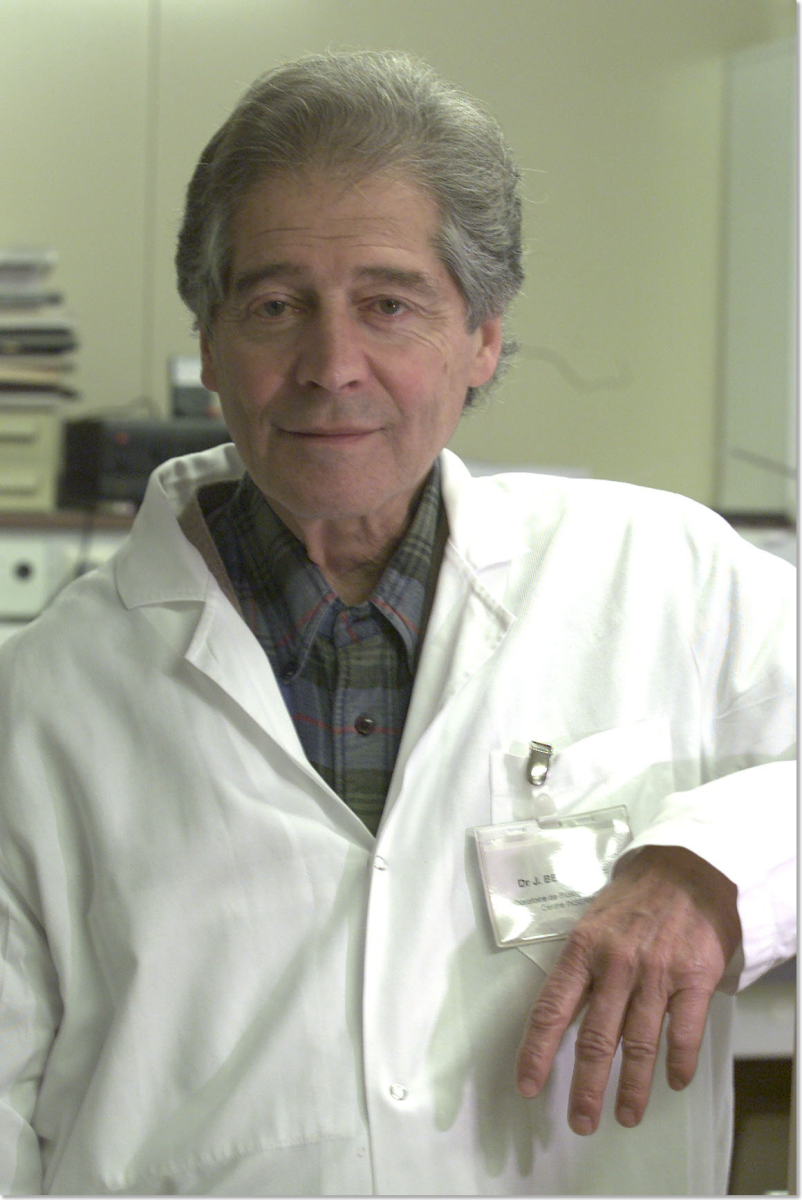
William
Ewart Gladstone (1809-98) and Benjamin Disraeli (1804-81) are generally thought
of as the two greatest British Prime Ministers of the 19th century.
They were both statesmen and politicians of the highest rank who made enormous
contributions to the well-being of their country. And they absolutely loathed
each other. It could be said that the greatness of both men was largely due to
that loathing, as each was determined to outdo the other over a period of at
least thirty years.
Differences
in character and background
The
mutual hatred was only partly political, Disraeli being a Conservative and
Gladstone a Liberal, as the two men were very different in personality and
character. Although they were both highly intelligent and ambitious, Disraeli
was a man of wit and dash, a latter-day dandy who enjoyed the good things of
life, whereas Gladstone Gladstone
One
problem that Disraeli always had was that he was a political outsider. He was
Jewish by race, although his father had him baptised as a Christian when he was
13, otherwise his later political career would have been impossible. His
features were “un-British”, his father having descended from a family of
Arabian Jews and his mother being Italian. His background was middle-class and
his education patchy. In his youth he had tried to invest in South American
silver mines, but was financially ruined when the mines turned out to be
worthless.
By
contrast, Gladstone Christ Church College ,
Oxford
Disraeli’s
career as a Member of Parliament got off to a shaky start. He was elected in
1837 and made a very poor maiden speech that was dismissed with laughter and
jeers. One of the jeerers was William Gladstone, who had five years’ more
political experience despite being younger than Disraeli by five years.
Political
clashes
The
first political issue that divided the two men was that of protectionism versus
free trade. In 1846 Gladstone and Robert Peel supported repeal of the Corn Laws
that had prevented cheap grain from being imported and thus lowering the price
of bread. The issue split the Tory Party (now known as the Conservatives) with Gladstone
In
1851 Disraeli became Chancellor of the Exchequer in the Conservative government
led from the House of Lords by Lord Derby. He had little idea of how to run the
finances of the country, any more than he could keep his personal affairs in
order.
On 3rd
December Disraeli presented his budget, which included several controversial
points. In his speech he made a number of personal remarks about members of the
opposition, including Gladstone Gladstone
Prime
Ministers
Disraeli
was the first of the two to become Prime Minister, which he did in 1868 when
Lord Derby resigned on health grounds. Disraeli had been very effective in
steering the 1867 Reform Act through the Commons, even attracting Gladstone Gladstone
When
Disraeli returned to power in 1874, this time for an extended stay in the Prime
Ministerial role, he proved to be just as reforming as Gladstone
However,
hostilities between the two men were to flare alarmingly in 1876 when the
Ottoman Turks put down a rebellion in Bulgaria Gladstone
For
the 1880 General Election, Gladstone stood for
the Midlothian seat in Scotland Gladstone Bulgaria
but also for Britain ’s
military ventures in Afghanistan
and South Africa
A
rivalry ended by death
By
this time, Disraeli (who had been ennobled as Lord Beaconsfield in 1876) was a
sick man and he only had a year more to live. He died on 19th April
1881. As Prime Minister, Gladstone
Queen
Victoria’s opinion
The
rivalry between Disraeli and Gladstone was settled in the former’s favour in
the eyes of Queen Victoria. She had taken an immediate liking to Disraeli when
he first became Prime Minister, as he had the gift of being able to listen to
and empathise with people at all levels. The Queen had needed a friend to
replace Prince Albert
However,
the Queen was far less impressed by Gladstone, who was soon to replace Disraeli
as her chief minister. Whereas she had enjoyed her weekly meetings with the
charming Benjamin Disraeli, she complained that Gladstone Gladstone even
went to the extent that, when the Liberal party won the 1880 election, she
wanted Lord Hartington, the party leader, to be Prime Minister and had to be
persuaded to ask Gladstone
History’s
verdict
It
cannot be disputed that, of the two men, Disraeli was the more personable and
likeable. However, although Gladstone London
They
may have been the bitterest of rivals, but Gladstone and Disraeli were
certainly two of the greatest politicians that Great Britain
© John Welford




